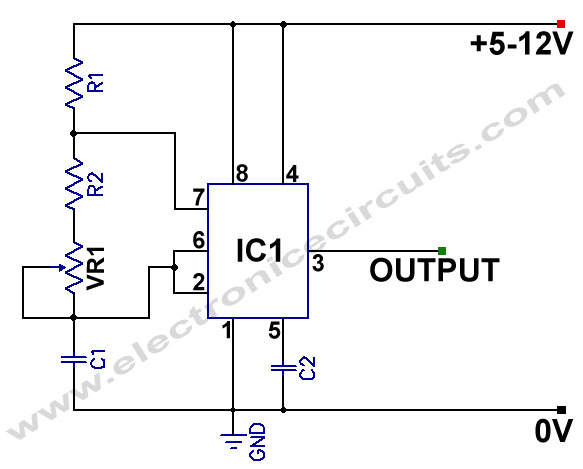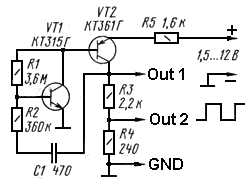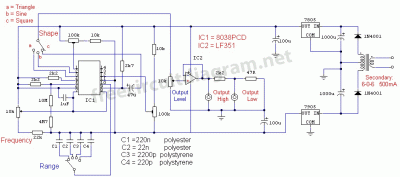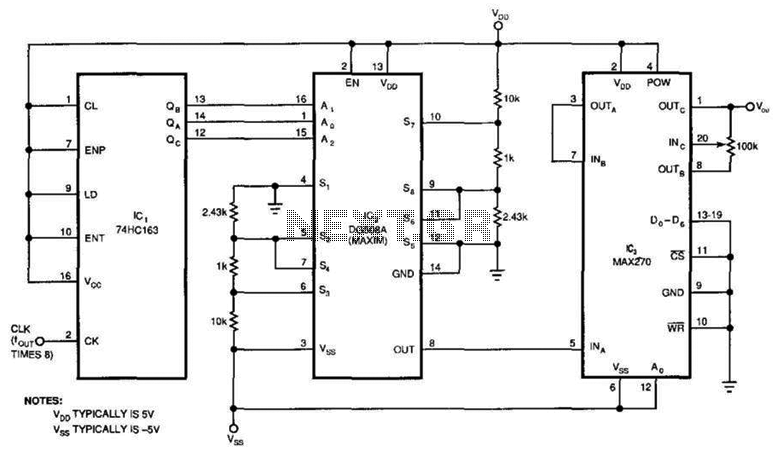
Triangle Waveform Signal Generator
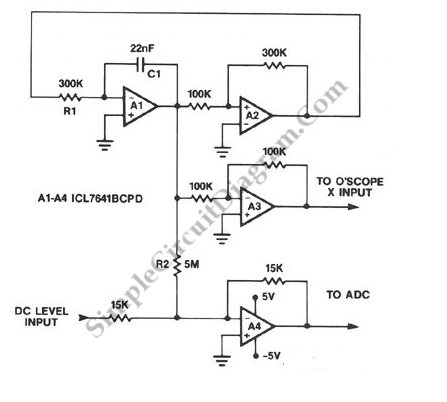
A symmetrical millivolt peak-to-peak triangle waveform can be generated by the circuit illustrated in the schematic diagram below. This circuit is equipped with...
This circuit employs an operational amplifier (op-amp) configured in an integrator setup to produce a triangle waveform. The input signal is typically a square waveform, which the op-amp integrates to generate the desired triangular output. The frequency and amplitude of the triangle waveform depend on the characteristics of the input signal and the feedback components used in the circuit.
Key components of the circuit include resistors and capacitors that determine the time constants for charging and discharging, thus influencing the slope of the triangle waveform. The feedback resistor and capacitor values are critical; they must be selected carefully to achieve the desired frequency response and output amplitude. Additionally, the op-amp should be chosen based on its bandwidth and slew rate to ensure that it can handle the frequency of operation without distortion.
The circuit may also include diodes for clamping the output to prevent it from exceeding specified voltage levels, ensuring that the waveform remains within the desired range. Proper power supply decoupling is essential to maintain stability and reduce noise in the output signal. Overall, this configuration provides a reliable method for generating a symmetrical triangle waveform suitable for various applications in signal processing and waveform generation.A symmetrical, mV peak to peak triangle waveform can be generated by the circuit depicted in the following schematic diagram. This circuit is featured with.. 🔗 External reference
This circuit employs an operational amplifier (op-amp) configured in an integrator setup to produce a triangle waveform. The input signal is typically a square waveform, which the op-amp integrates to generate the desired triangular output. The frequency and amplitude of the triangle waveform depend on the characteristics of the input signal and the feedback components used in the circuit.
Key components of the circuit include resistors and capacitors that determine the time constants for charging and discharging, thus influencing the slope of the triangle waveform. The feedback resistor and capacitor values are critical; they must be selected carefully to achieve the desired frequency response and output amplitude. Additionally, the op-amp should be chosen based on its bandwidth and slew rate to ensure that it can handle the frequency of operation without distortion.
The circuit may also include diodes for clamping the output to prevent it from exceeding specified voltage levels, ensuring that the waveform remains within the desired range. Proper power supply decoupling is essential to maintain stability and reduce noise in the output signal. Overall, this configuration provides a reliable method for generating a symmetrical triangle waveform suitable for various applications in signal processing and waveform generation.A symmetrical, mV peak to peak triangle waveform can be generated by the circuit depicted in the following schematic diagram. This circuit is featured with.. 🔗 External reference

